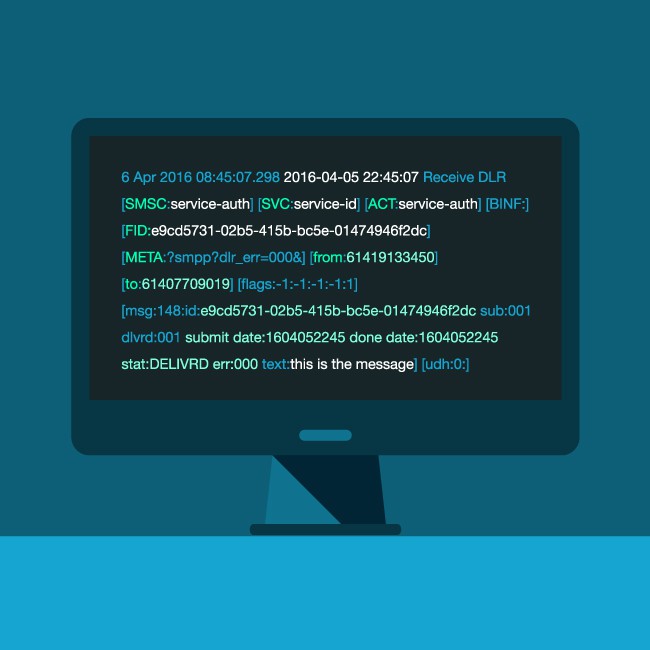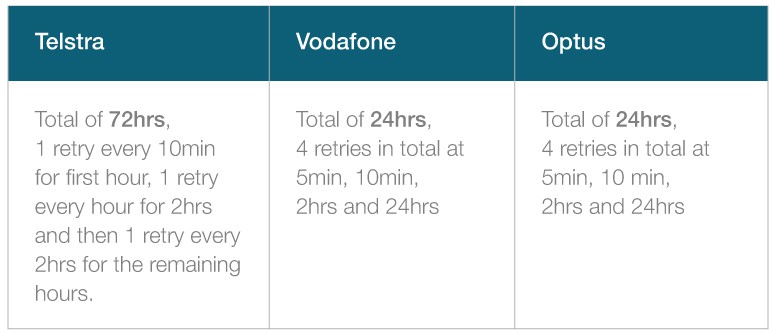Reporting on SMS campaigns and delivery is essential to ensure effective communication, message value, and keeping your contact database clean. The primary methods of reporting are as follows:
- Delivery Receipt (DLR)
- Message Reply
- Link Tracking
- Unsubscribes
 Sample DLR log file
Sample DLR log file
8.1 SMS Reporting
Business SMS services provide a delivery receipt (DLR) report on all text messages sent. This includes:
- To
- From
- Date/time submitted to the carrier
- Date/time message report completed
- Message status
- Message error code
- Message ID
Handset DLR vs Carrier DLR
To save money, some SS7-connected SMS companies may not provide a handset delivery receipt. Instead, they’ll provide a carrier acknowledgement, showing that a message made its way to the network. This reporting can be problematic, as you won’t get an accurate representation of actual delivery time. To alleviate this problem, make sure you ask if your online SMS service provides handset delivery receipts if this is essential to you.
Generally speaking, the more information provided, the better. Status reports and timing vary from carrier to carrier, but the most include:
- Sent (Delivered to carrier network)
- Delivered (Delivered to handset)
- Undelivered (Number active but unavailable)
- Rejected (Number disconnected)
- Expired (Max delivery attempts reached)
SMS replies
Another great way to gauge the success of an SMS campaign is by the replies. Recipients can reply to a message very quickly, and if you ask them to reply with a keyword, for example, you can have them receive an autoresponse, add them to a new list, or forward their details to an email.
The volume of replies often shows the effectiveness of the SMS campaign, which make them an excellent way to report. Most good online SMS services will show you a report of replies.
Link Tracking
It is now common practice to add links to text messages. As described in detail in Lesson 7, link tracking is a great way to generate engagement and get a better idea of the quality of your messages through the volume of link hits you receive.
Unsubscribes
Similar to receiving SMS replies from recipients, unsubscribes or opt-outs are also a good way to gauge the performance of a campaign. Fewer opt-outs signal a higher perceived value of a service.
Making opt-outs difficult may be tempting; however, this tactic backfires, frustrating the recipient and projects a bad brand experience. It is also more expensive to send to recipients that do not want to hear from you.
8.3 Common Reasons for Message Failure
With rejected messages, the most common reason is a disconnected number. On very rare occasions, a technical or network error can result in a rejected status.
For undelivered messages, they can occur for one of many reasons:
- The phone is out of credit and cannot receive SMS,
- The phone number is active but is off or out of range,
- Active pre-paid account but SIM not in the phone,
- Network problems, or
- The phone is roaming overseas
8.3 Australian Carrier Retry Strategies
Like mentioned above, there are many reasons why a message won’t deliver, but the carrier will attempt to deliver them to the handset more than once. Here are their retry strategies:









